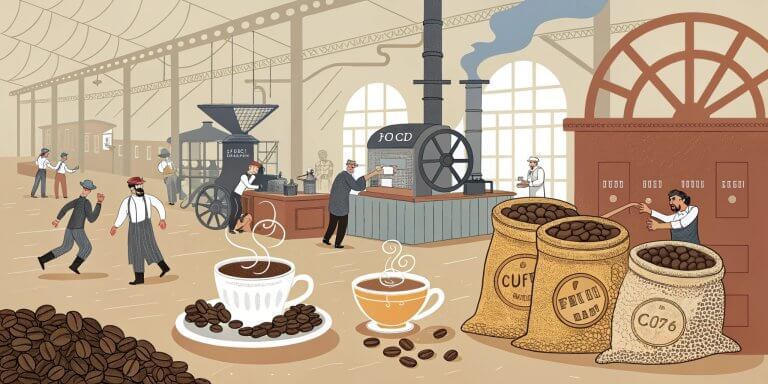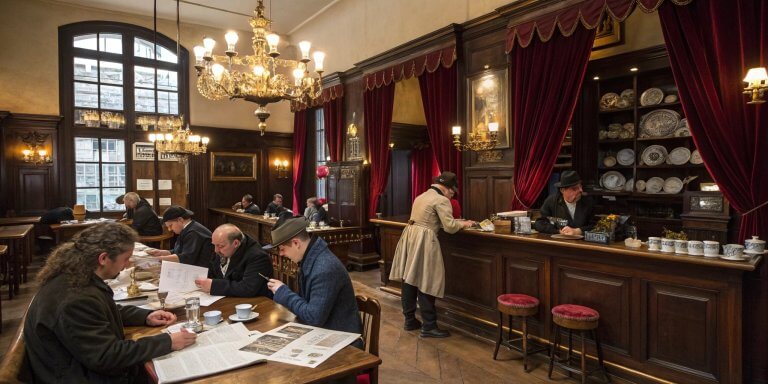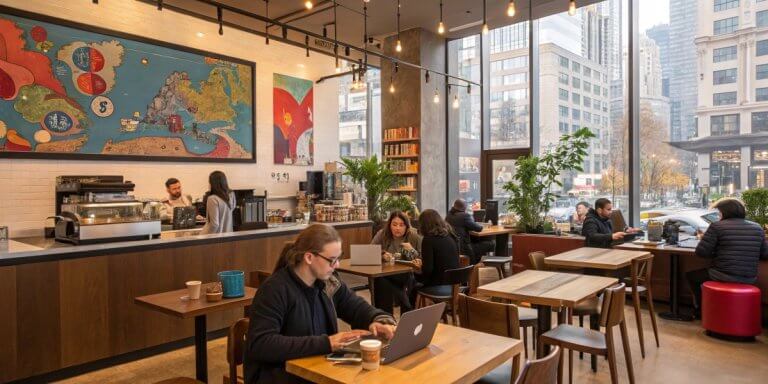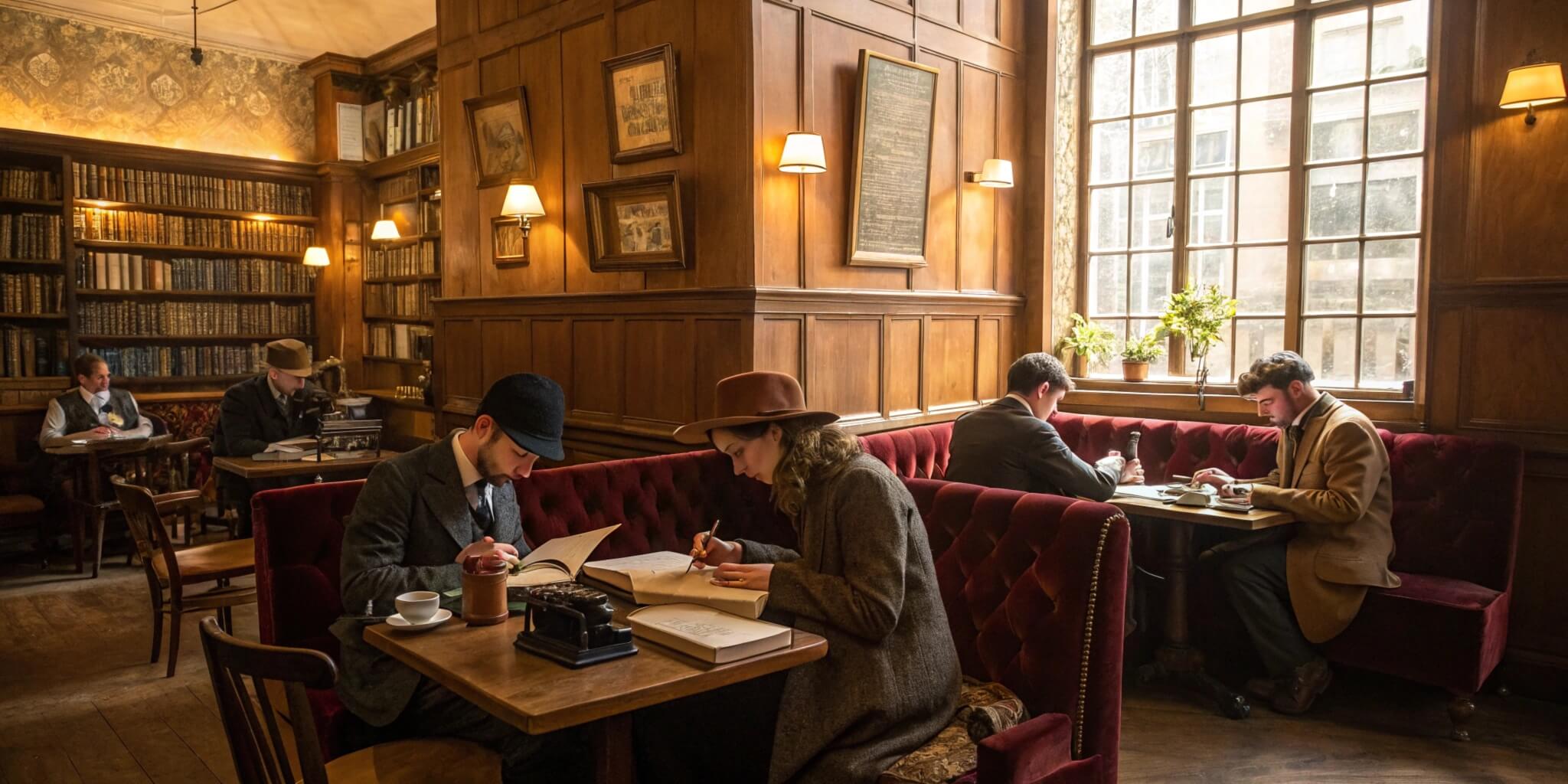
From the 17th-century coffeehouses of London to the iconic cafés of Paris, these meeting places have a rich historical context. They have been more than just places to enjoy a hot drink—they’ve served as hubs for creativity, collaboration, and inspiration for writers. These vibrant spaces became homes for intellectuals, philosophers, and, most notably, writers who found inspiration within the walls of these establishments. Their influence on the literary world is profound and still resonates with us today.
The Rise of Coffeehouses and Early Literary Influence
The emergence of coffeehouses in the late 17th century transformed how writers and intellectuals connected. Before coffeehouses, much of the literary world was confined to salons and private gatherings, often exclusive to the elite. Coffeehouses, however, were different. They were open to anyone who could afford a cup of coffee, fostering a sense of inclusivity and making them a melting pot of ideas.
In England, coffeehouses like Will’s and Button’s became famous for their literary patrons. Writers such as Samuel Pepys, John Dryden, and Joseph Addison frequently gathered there to discuss literature, politics, and the day’s news.
These cafés became a breeding ground for new ideas, with writers using them as informal offices to work on their latest articles and stories. Many literary projects were born from the conversations in these spaces, such as The Spectator and The Tattler, which Joseph Addison and Richard Steele created to engage with a broader audience.
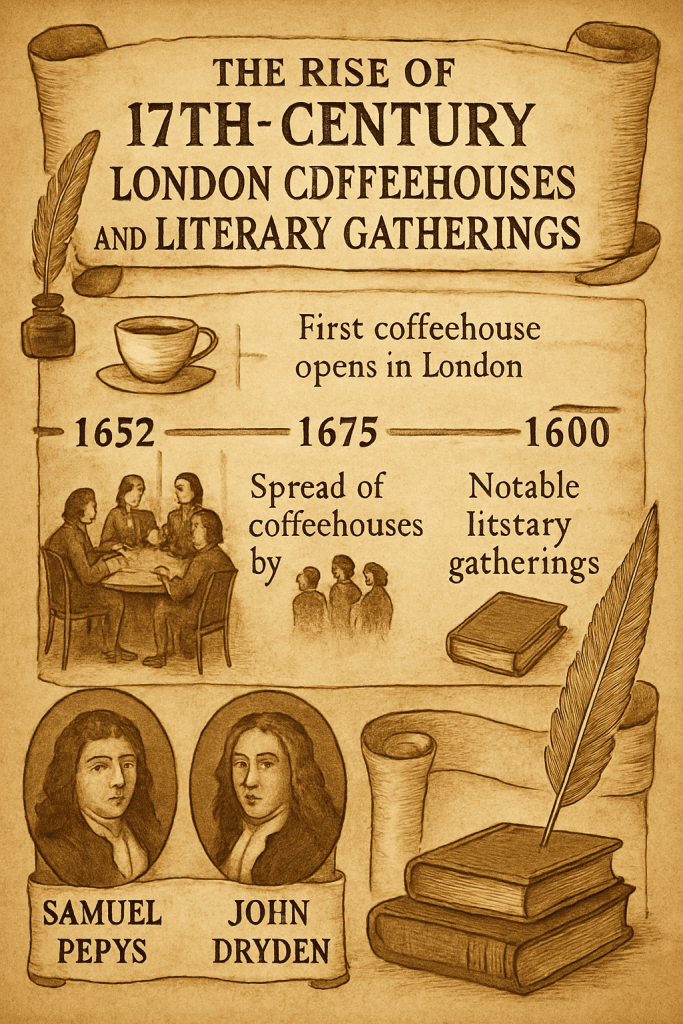
Rise of 17th-C London Coffeehouses Infographic
Parisian Cafés: The Birthplace of Modernism
Paris, the literary capital of the early 20th century, was home to many of the world’s greatest writers, particularly during the Modernist era. In the 1920s, famous expatriate writers like Ernest Hemingway, F. Scott Fitzgerald, and Gertrude Stein were drawn to the vibrant café culture in Montparnasse. Cafés like La Rotonde and Les Deux Magots played a pivotal role in the birth of modernism, becoming central to the Parisian literary scene, where writers mingled with artists, musicians, and philosophers.
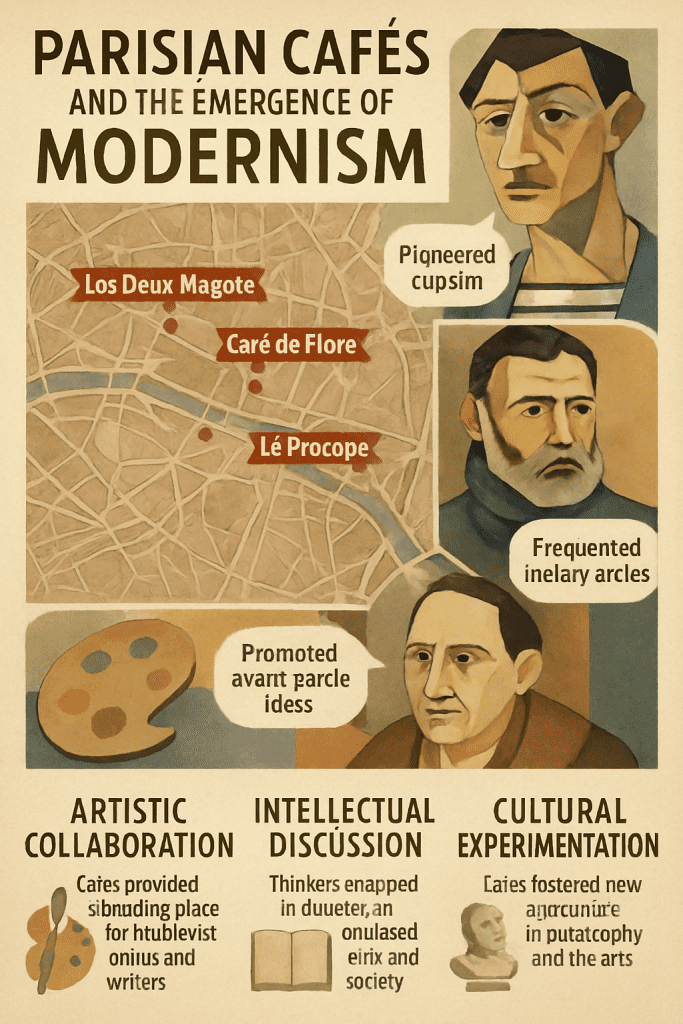
Montparnasse cafés fueling Modernist creativity
Hemingway, in particular, found inspiration in the café environment, which he wrote about in his memoir A Moveable Feast. For him and others, the café provided a space to write and an opportunity to observe the world around them. This sense of community and shared experience was vital for the creative process. Many of the works produced by these writers, including Hemingway’s The Sun Also Rises and Fitzgerald’s The Great Gatsby, reflected the disillusionment and freedom they felt during their time in Paris, including Hemingway’s The Sun Also Rises and Fitzgerald’s The Great Gatsby.
Viennese Coffeehouses and the Intellectual Elite
In Vienna, coffeehouses were more than just places to drink coffee—they were cultural institutions. Café Central, one of Vienna’s most famous coffeehouses, was a meeting place for writers, poets, and philosophers. Regular patrons included Stefan Zweig, Karl Kraus, and Sigmund Freud.
These intellectuals gathered to debate art, politics, and philosophy, often staying for hours to discuss their ideas over cups of coffee.
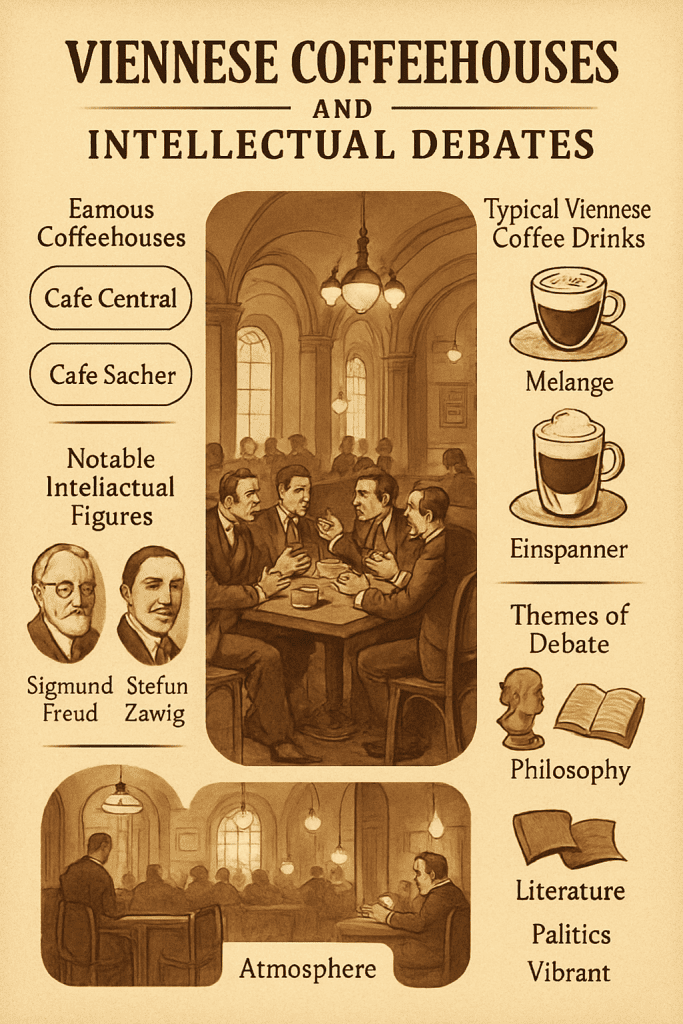
Café Central as Vienna’s hub for writers and thinkers
The intellectual culture developed in Viennese coffeehouses had a profound and lasting impact on literature and thought. The relaxed atmosphere allowed writers to work on their manuscripts and engage in meaningful discussions with their peers. In fact, the ‘Viennese Coffee House Culture’ is now recognized by UNESCO as an intangible cultural heritage, emphasizing its enduring role in shaping European intellectual life.
Literary Cafés in the United States: The Beat Generation
The 1950s in the United States saw the rise of the Beat Generation, a group of writers and poets who sought to challenge the conventions of literature and society. Coffeehouses in San Francisco and New York City became the focal points of this movement, serving as the birthplace of their revolutionary ideas. For instance, Vesuvio Café in San Francisco was a popular hangout for writers like Jack Kerouac and Allen Ginsberg, who would spend hours discussing their work and sharing ideas.
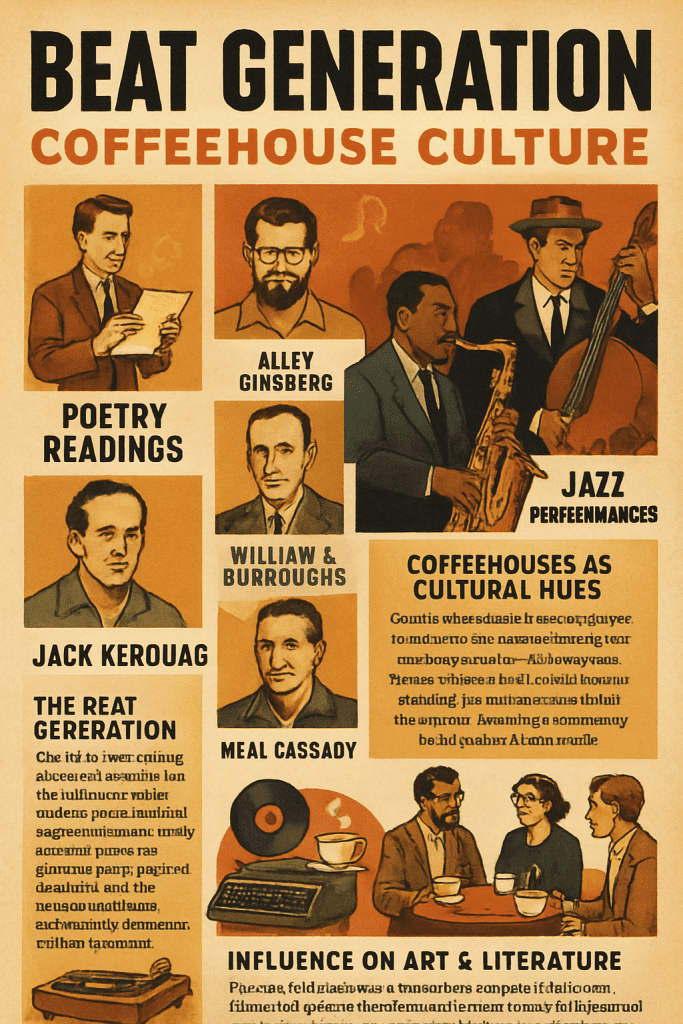
Vesuvio Café and the rise of Beat literary circles
The coffeehouse environment was perfect for the Beat writers, who valued spontaneity and freedom. These establishments provided a space where they could experiment with their ideas and share them with others in the literary community. The open and unstructured atmosphere of coffeehouses helped fuel the Beat Generation’s creativity, which would have a lasting influence on American literature.
Existentialist Cafés in 20th Century France
Existentialism, a philosophical movement that questioned the nature of existence, found its home in the cafés of Paris during the mid-20th century. Writers and philosophers like Jean-Paul Sartre and Simone de Beauvoir were regulars at cafés such as Café de Flore and Les Deux Magots.
These cafés became the breeding grounds for existentialist thought, where intellectuals could engage in deep discussions about life, freedom, and human existence.
Sartre’s work, including Being and Nothingness, was heavily influenced by the café culture in which he immersed himself. For these existentialists, the café represented a space of freedom—both intellectual and physical—where they could escape the constraints of society and explore their ideas without restriction.
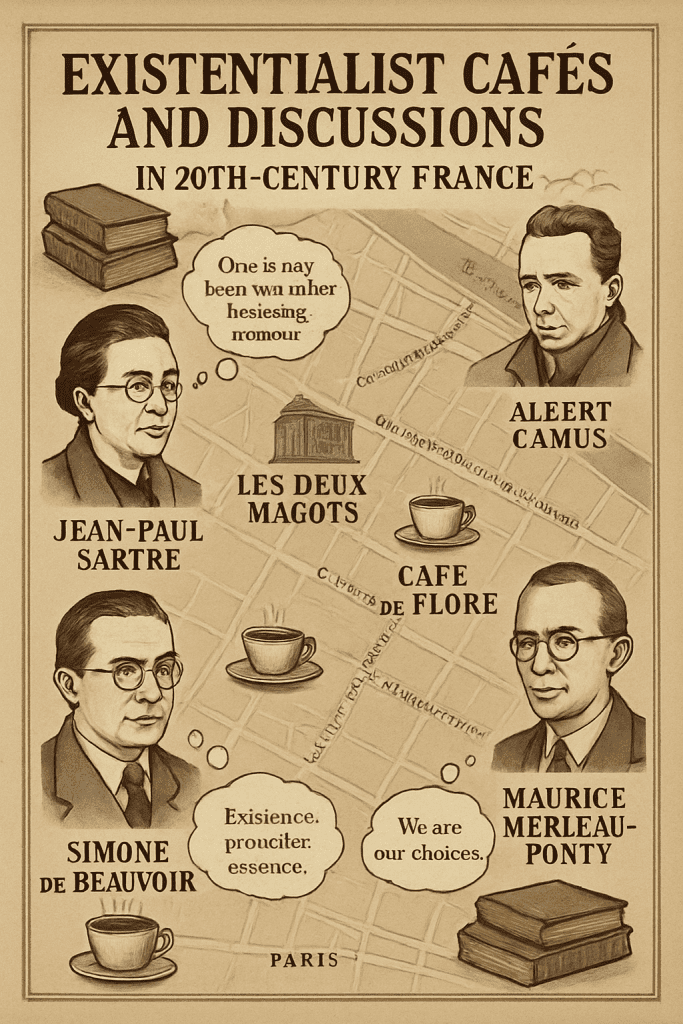
Sartre, de Beauvoir, and deep café debates
Coffeehouses as Settings in Literature
Beyond being places where writers gathered, coffeehouses have often been used as settings within literature itself. In Marcel Proust’s In Search of Lost Time, the café represents a space of memory and reflection. Similarly, in Haruki Murakami’s Norwegian Wood, characters often find themselves in coffeehouses, using the time to think deeply about their lives.
The recurring presence of coffeehouses in literature reflects the importance of these spaces in fostering introspection and creativity. Writers use cafés as physical places to work and as metaphors for social interaction and intellectual engagement.
The Modern Writer’s Café: Continuing the Legacy
Today, the tradition of writers finding inspiration in cafés continues. Writers still flock to coffeehouses to work on their manuscripts, share ideas with fellow creatives, and enjoy the atmosphere. In cities like New York, London, and Paris, cafés remain hubs for literary activity, where writers can find the same sense of community and inspiration that their predecessors did centuries ago.

From typewriters to Wi-Fi: today’s creative coffee spots
Digital technology has also enhanced the café experience, with many modern coffeehouses offering free Wi-Fi and cozy spaces for freelance writers and creatives. These spaces have become the go-to spots for those who seek a blend of solitude and social connection while they work.
Conclusion
The literary influence of coffeehouses spans centuries and continents. From the 17th-century coffeehouses of London to the Parisian cafés of the 20th century, these establishments have provided writers a unique space to think, create, and collaborate. Whether in the works of Samuel Pepys, Ernest Hemingway, or Jean-Paul Sartre, the legacy of coffeehouses as places of inspiration continues to shape today’s literary world. Coffeehouses remain, as they always have, a home for writers seeking to fuel their creativity one cup at a time.


